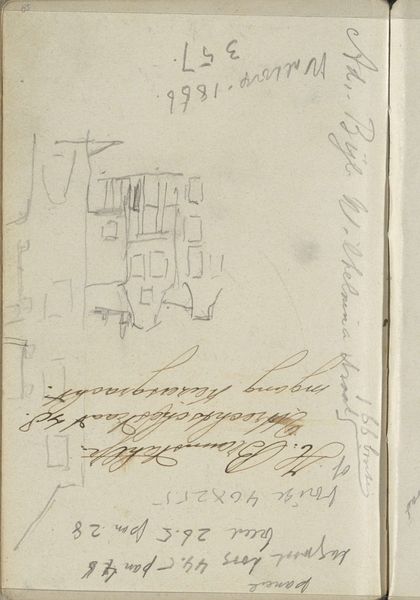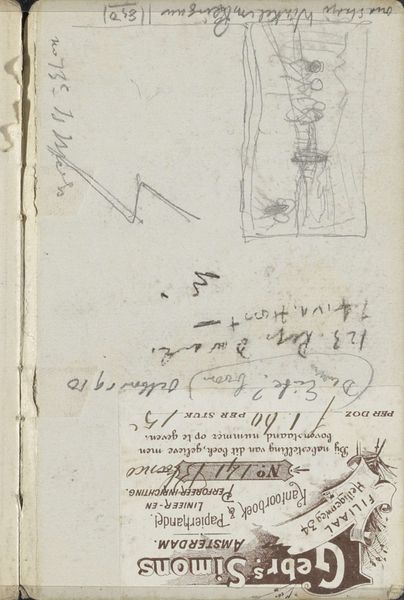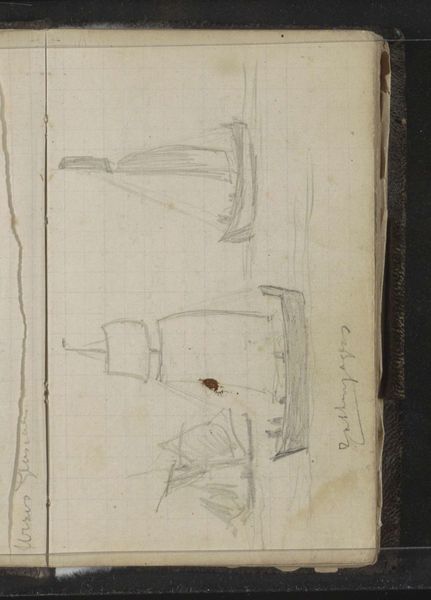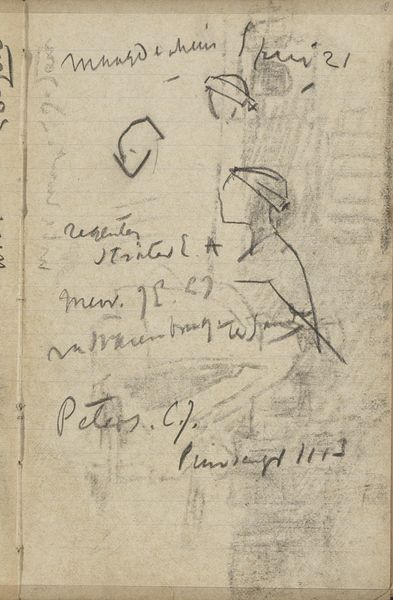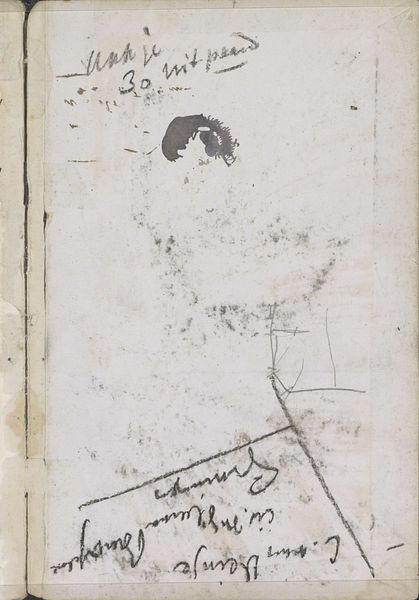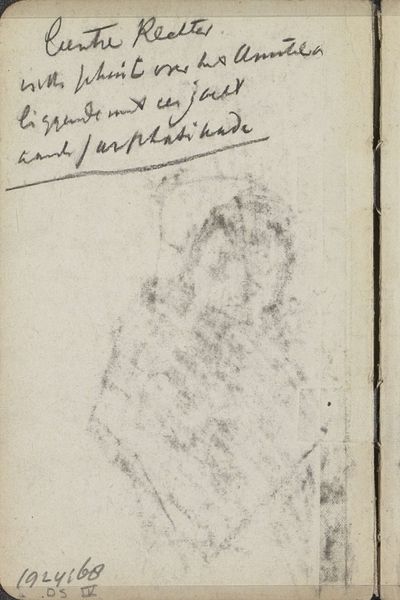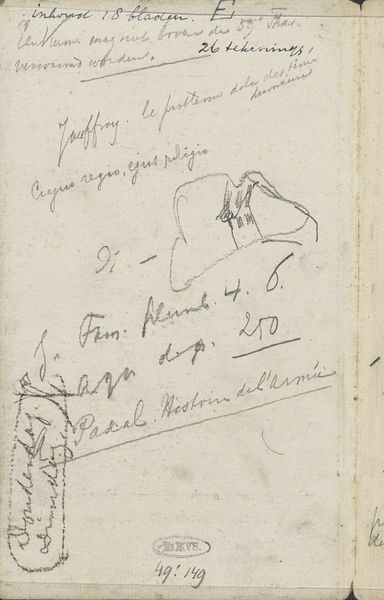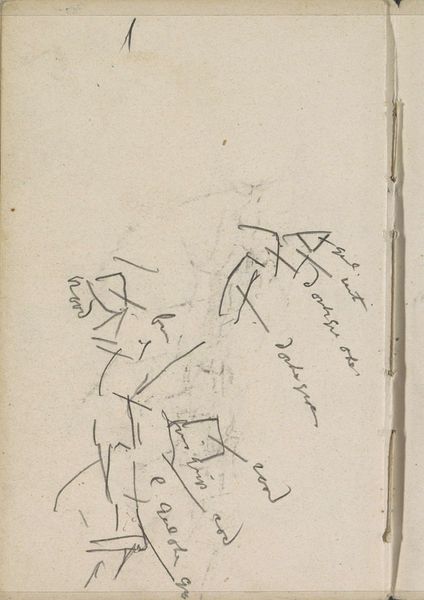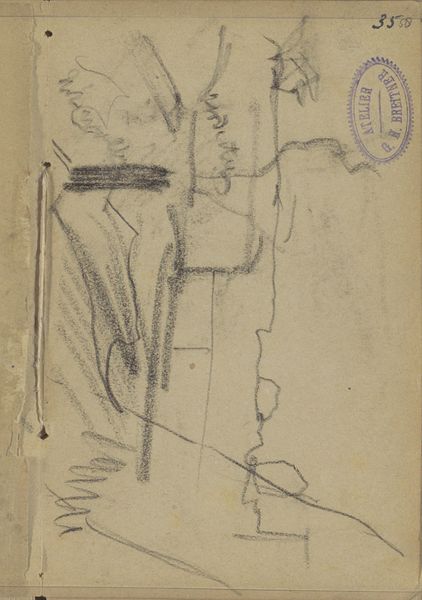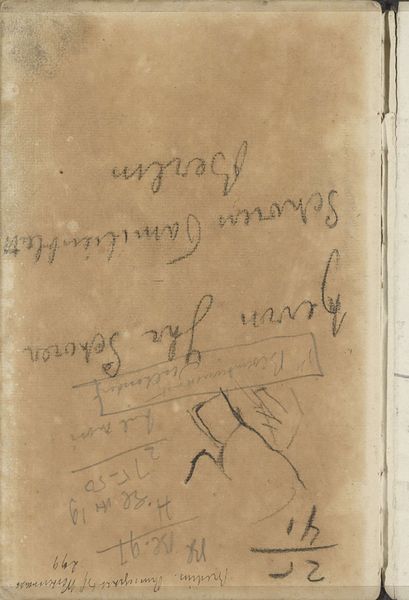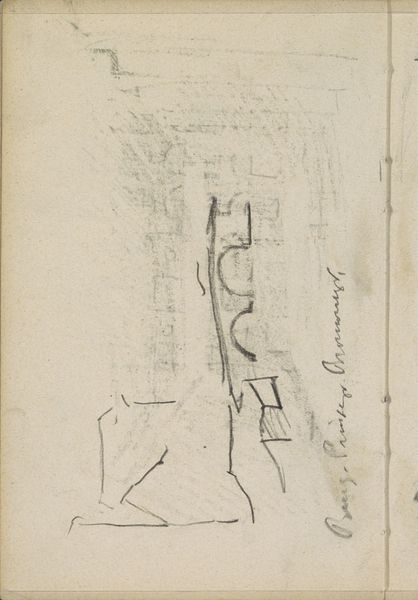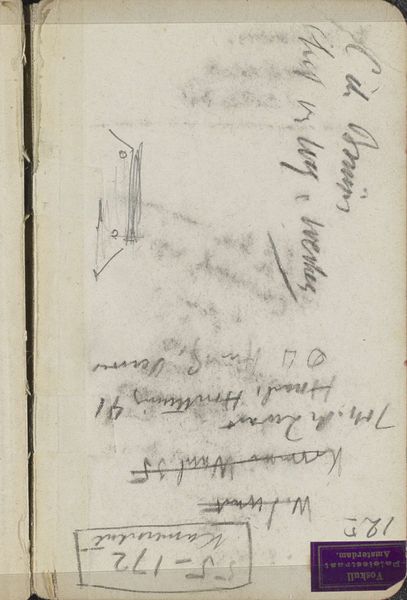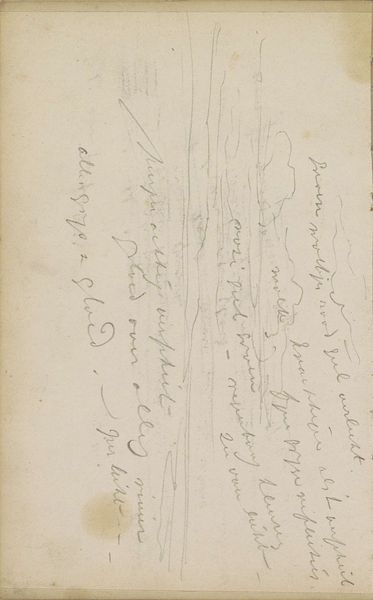
drawing, paper, pencil
#
portrait
#
drawing
#
impressionism
#
paper
#
pencil
#
realism
Copyright: Rijks Museum: Open Domain
Editor: Here we have "Two Figures, Possibly Women," a pencil drawing on paper created by George Hendrik Breitner between 1881 and 1883. It feels like a quick sketch, maybe a page torn from a notebook. There are some lines that show possible furniture in a room, and words written in script in the lower part of the page, with just these vague images on a humble piece of paper. How would you interpret this drawing? Curator: Well, this drawing intrigues me precisely because of its unfinished nature. The rapid, almost frantic lines Breitner used suggest an urgency in capturing a fleeting moment. But the material aspect interests me too: the humble pencil and paper, tools accessible to many, are here employed to document scenes of everyday life. Editor: Everyday life? How do you mean? Curator: Consider the figures themselves. They're not idealized; there is an apparent indifference about their portrayal. Breitner isn’t concerned with beauty in the conventional sense. Instead, the labor in this sketch becomes clear if you think of the industrialization occurring during this time. We can speculate: were these figures women that Breitner saw as laboring class? Are the means and limitations involved in their portrayal more meaningful than the people themselves? What’s more relevant in your mind: the women depicted, or the cultural statement made from their casual rendition? Editor: I hadn’t considered it in those terms before. Focusing on the pencil strokes, the cheap paper, shifts the perspective. It’s not about immortalizing beauty but about recording a reality, maybe even commenting on the labor of seeing in this way. Curator: Exactly. The labor extends from the depicted figures to the artist's act of drawing, each intertwined and informing our understanding of the work's purpose. So you see: every mark reflects labor and industrialism from a moment in time, both capturing and consumed by a quick graphite sketch. Editor: It’s amazing how focusing on the material production opens up the narrative!
Comments
No comments
Be the first to comment and join the conversation on the ultimate creative platform.
